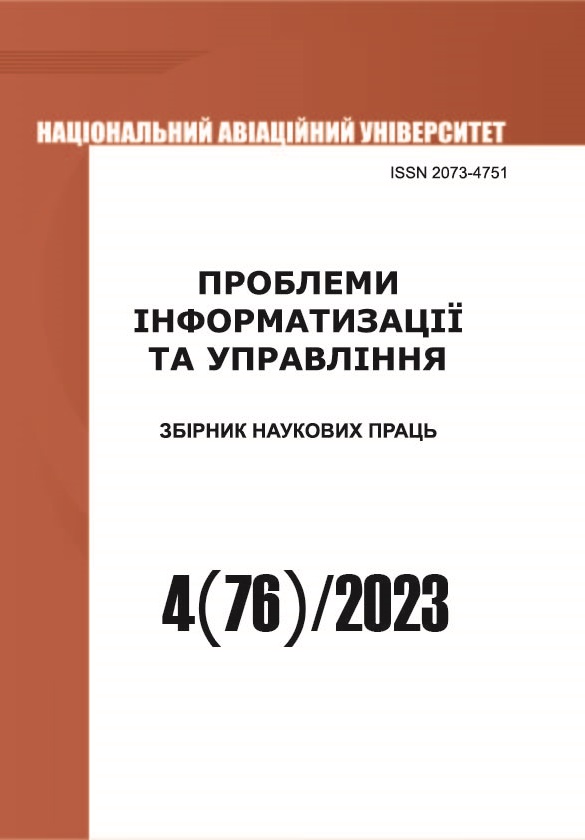Forecasting prices of financial instruments using deep learning methods
DOI:
https://doi.org/10.18372/2073-4751.76.18245Keywords:
forecasting, financial indicators, deep learning, Long Short-Term Memory, Natural Language ProcessingAbstract
This study is devoted to the problem of forecasting financial instruments’ prices on the stock market, the relevance of which has increased significantly in the modern world, and which is an important component of the processes of conducting financial activities and making informed investment decisions. A review and comparative analysis of the methods proposed in the existing studies was conducted, their shortcomings and shortcomings were revealed. Based on this, a new approach to solving this problem was proposed. The proposed approach is based on taking into account a complex set of factors for forecasting, including technical indicators, fundamental analysis data and macroeconomic factors, the use of a systematic approach to the selection of predictors (factors) for forecasting and inclusion in the model, the introduction of modern feature engineering and feature selection techniques, noise removal in input data, applying NLP techniques and sentiment analysis to integrate textual data that influence market trends, thus increasing the accuracy of modeling market processes. These principles were incorporated with machine and deep learning techniques capable of taking into account time sequences of data and complex relationships and dependencies between them, and a predictive model was built for forecasting stock prices. The results of model testing and evaluation of obtained performance accuracy metrics’ values for the developed model show it’s higher accuracy in comparison with the base model chosen for comparison, and also prove the effectiveness of using the proposed approach.
References
Lu W., Li J., Li Y., Sun A., Wang J. A CNN-LSTM-based model to forecast stock prices. Complexity. 2020. P.1–10.
Jarrah M., Derbali M. Predicting Saudi Stock Market Index by Using Multivariate Time Series Based on Deep Learning. Applied Sciences. 2023. V. 13(14). 8356.
Akita R., Yoshihara A., Matsubara T., Uehara K. Deep learning for stock prediction using numerical and textual information. 2016 IEEE/ACIS 15th International Conference on Computer and Information Science (ICIS) / Okayama, Japan, 2016. P. 1–6.
Drake P.P., Fabozzi F.J. The basics of finance: An introduction to financial markets, business finance, and portfolio management. John Wiley & Sons, 2010. 672 p.
Gravetter F.J., Wallnau L.B., Forzano L.A.B., Witnauer J.E. Essentials of statistics for the behavioral sciences. Cengage Learning, 2020. P. 490–512.
Gers F.A., Schraudolph N.N., Schmidhuber J. Learning precise timing with LSTM recurrent networks. Journal of machine learning research. 2002. Iss. 3. P. 115–143.
Downloads
Published
Issue
Section
License
Автори, які публікуються у цьому журналі, погоджуються з наступними умовами:- Автори залишають за собою право на авторство своєї роботи та передають журналу право першої публікації цієї роботи на умовах ліцензії Creative Commons Attribution License, котра дозволяє іншим особам вільно розповсюджувати опубліковану роботу з обов'язковим посиланням на авторів оригінальної роботи та першу публікацію роботи у цьому журналі.
- Автори мають право укладати самостійні додаткові угоди щодо неексклюзивного розповсюдження роботи у тому вигляді, в якому вона була опублікована цим журналом (наприклад, розміщувати роботу в електронному сховищі установи або публікувати у складі монографії), за умови збереження посилання на першу публікацію роботи у цьому журналі.
- Політика журналу дозволяє і заохочує розміщення авторами в мережі Інтернет (наприклад, у сховищах установ або на особистих веб-сайтах) рукопису роботи, як до подання цього рукопису до редакції, так і під час його редакційного опрацювання, оскільки це сприяє виникненню продуктивної наукової дискусії та позитивно позначається на оперативності та динаміці цитування опублікованої роботи (див. The Effect of Open Access).


